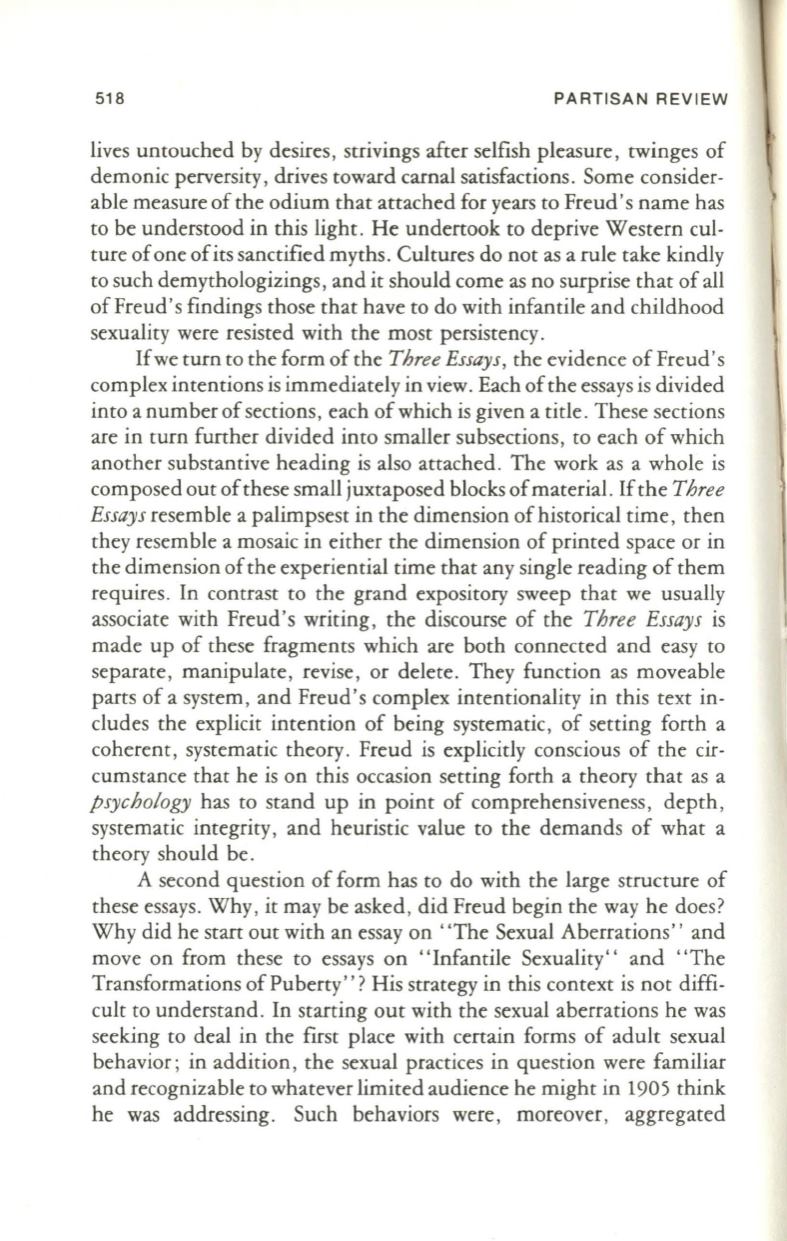
518
PARTISAN REVIEW
lives untouched by desires , strivings after selfish pleasure , twinges of
demonic perversity , drives toward carnal satisfactions . Some consider–
able measure of the odium that attached for years to Freud 's name has
to
be understood in this light. He undertook
to
deprive Western cul–
ture of one of its sanctified myths . Cultures do not as a rule take kindly
to such demythologizings, and it should come as no surprise that of all
of Freud 's findings those that have to do with infantile and childhood
sexuality were resisted with the most persistency.
Ifwe turn to the form of the
Three Essays,
the evidence of Freud's
complex intentions is immediately in view. Each of the essays is divided
into anumber of sections, each of which is given a title . These sections
are in turn further divided into smaller subsections , to each of which
another substantive heading is also attached . The work as a whole is
composed out of these small juxtaposed blocks ofmaterial. If the
Three
Essays
resemble a palimpsest in the dimension of historical time , then
they resemble a mosaic in either the dimension of printed space or in
the dimension of the experiential time that any single reading of them
requires . In contrast to the grand expository sweep that we usually
associate with Freud 's writing, the discourse of the
Three Essays
is
made up of these fragments which are both connected and easy to
separate , manipulate, revise, or delete. They function as moveable
parts of a system, and Freud's complex intentionality in this text in–
cludes the explicit intention of being systematic , of setting forth a
coherent, systematic theory. Freud is explicitly conscious of the cir–
cumstance that he is on this occasion setting forth a theory that as a
psychology
has to stand up in point of comprehensiveness, depth ,
systematic integrity , and heuristic value
to
the demands of what a
theory should be .
A second question of form has to do with the large structure of
these essays. Why, it may be asked , did Freud begin the way he does?
Why did he start out with an essay on "The Sexual Aberrations" and
move on from these to essays on "Infantile Sexuality" and "The
Transformations of Puberty" ? His strategy in this context is not diffi–
cult to understand. In starting out with the sexual aberrations he was
seeking
to
deal in the first place with certain forms of adult sexual
behavior ; in addition , the sexual practices in question were familiar
and recognizable
to
whatever limited audience he might in 1905 think
he was addressing. Such behaviors were , moreover, aggregated


